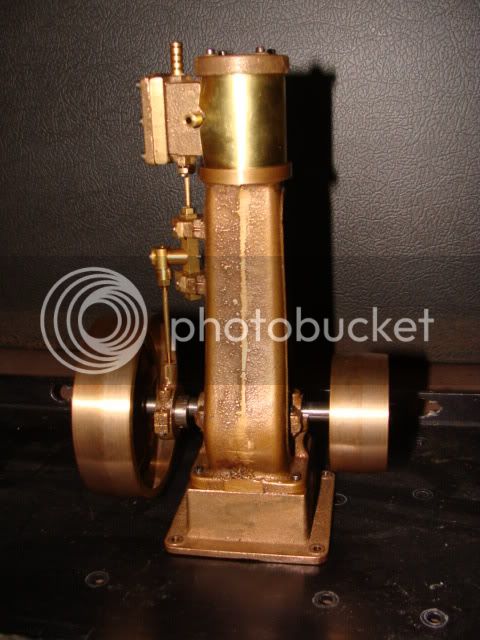Threading 3/32 rods for 3-48.
My chuck is too large to properly hold such a small rod. I had no problem turning and threading the 1/8" piston/slide rod (except for my lathe seizing up but that's another story). I got around this 'small problem' by making a soft jaw from aluminium hex rod. I chucked up a small peace of the alum rod facing, centre drilling, and drilling through with a 3/32 drill. After marking the side so I could return it to the same position I removed it and using a worn hacksaw blade I cut a slit right to the 3/32 hole. I then aligned the the soft jaw in the chuck, inserting the 3/32 rod, and firmly tightened the chuck down on the soft jaw. It firmly held the 3/32 rod so I proceeded to thread it. The result is shown below.
Lathe seizure story here: http://www.homemodelenginemachinist.com/index.php?topic=14426.0

My chuck is too large to properly hold such a small rod. I had no problem turning and threading the 1/8" piston/slide rod (except for my lathe seizing up but that's another story). I got around this 'small problem' by making a soft jaw from aluminium hex rod. I chucked up a small peace of the alum rod facing, centre drilling, and drilling through with a 3/32 drill. After marking the side so I could return it to the same position I removed it and using a worn hacksaw blade I cut a slit right to the 3/32 hole. I then aligned the the soft jaw in the chuck, inserting the 3/32 rod, and firmly tightened the chuck down on the soft jaw. It firmly held the 3/32 rod so I proceeded to thread it. The result is shown below.
Lathe seizure story here: http://www.homemodelenginemachinist.com/index.php?topic=14426.0

















